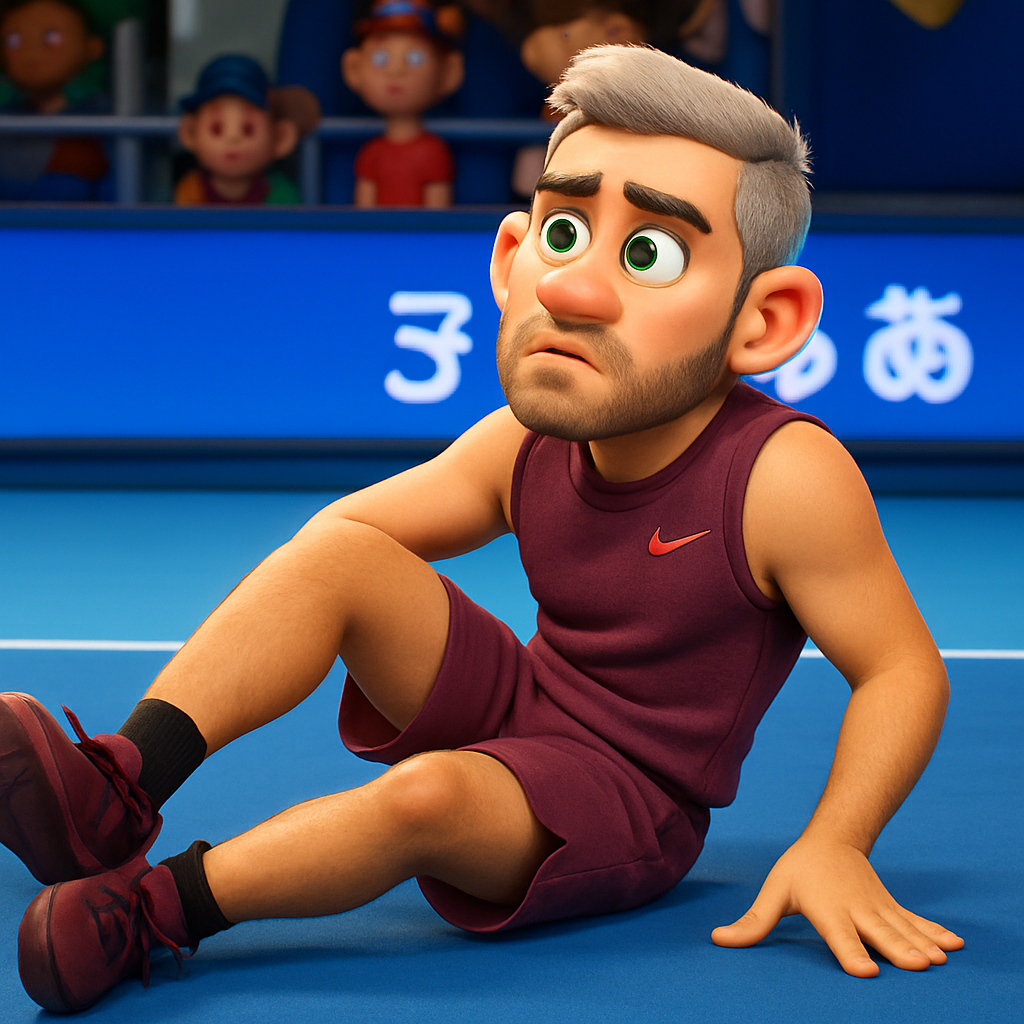TOKYO — World number one Carlos Alcaraz experienced a moment of genuine fear during his opening match at the Japan Open on Thursday, turning his ankle early in a first-round victory that cast a shadow over his Tokyo campaign and raised immediate concerns for his upcoming schedule.
The incident occurred just two games into his match against British qualifier Daniel Evans. Chasing a drop shot at 1-1 in the first set, Alcaraz’s left foot appeared to slip on the court surface as he changed direction, causing his ankle to roll over sharply. The 20-year-old Spaniard immediately fell to the ground, clutching his ankle in visible pain while a hushed silence fell over the Ariake Coliseum.
After receiving a medical timeout for treatment and taping, Alcaraz remarkably not only continued but dominated the match, securing a 7-6(5), 6-2 win. However, his post-match comments revealed the significant scare he had endured. "I was scared," Alcaraz admitted to reporters. "I thought I was going to be out for a long time. When I fell, my first thought was about my ankle. I thought it was going to be bad."
The timing of the injury is particularly worrying for Alcaraz and his team. The young star is in the thick of the chase for the coveted year-end No. 1 ranking, a battle currently led by Novak Djokovic. The Asian swing, including the Japan Open and the upcoming Shanghai Masters, represents a crucial opportunity to accumulate points before the season-ending ATP Finals in Turin.
The Moment of Impact and Immediate Aftermath
The sight of a top athlete crumpling to the court is always alarming, and Alcaraz’s reaction suggested a serious problem. He remained on the ground for several moments before being attended to by the tournament physio. The initial fear was that he might have to retire from the match, a scenario that would have handed Evans a walkover and ended Alcaraz’s title hopes in Tokyo before they truly began.
After the ankle was heavily taped, Alcaraz returned to the court to a warm ovation. He proceeded to play with impressive focus and aggression, seemingly unfazed by the potential injury. He saved a set point in the first-set tiebreak before cruising through the second set. His ability to perform at such a high level immediately after the scare was a testament to his resilience.
"After the match, I was feeling better," Alcaraz said, offering a measure of relief to his fans. "I was testing the ankle a little bit, and right now I’m feeling better. I’m going to have a test tomorrow to see what it is, but let’s see how it’s going to be."
The High-Stakes Context: The Race for Number One
This ankle scare is more than just a minor hiccup in Alcaraz’s season; it has significant implications for the ATP Tour’s pinnacle battle. Novak Djokovic, who recently reclaimed the top spot after the US Open, is not playing this week, giving Alcaraz a chance to close the 3,260-point gap. A deep run in Tokyo, and more importantly in the Masters 1000 event in Shanghai, is vital for his aspirations.
An injury, even a minor one, could derail this momentum. The physical demands of hard-court tennis are immense, and a compromised ankle affects every aspect of a player’s game:
- Movement and Footwork: The foundation of Alcaraz’s explosive style.
- Serve Power and Stability: Crucial for earning free points.
- Confidence on Aggressive Shots: Knowing he can push off without pain is key.
- Recovery Between Points and Matches: Inflammation needs to be managed carefully.
Any limitation in these areas could make the difference between winning a title and an early exit, especially against the caliber of opponents he will face in the latter stages of tournaments. The decision on whether to continue in Tokyo will be a delicate one, balancing short-term gain against long-term fitness.
Historical Precedents and Fan Reaction
Tennis history is littered with examples of ankle injuries disrupting seasons and title defenses. The sport’s stop-start nature, with sudden changes of direction, makes ankles particularly vulnerable. The immediate and passionate reaction on social media highlighted the global concern for the popular young champion, with the hashtag #Alcaraz trending worldwide as fans wished him a speedy recovery.
Alcaraz’s team, led by coach Juan Carlos Ferrero, will undoubtedly take a cautious approach. Ferrero has been meticulous in managing his protégé’s physical development and schedule, understanding that a long career is the ultimate goal. The results of the medical scans will dictate their next steps.
Looking Ahead: The Road to Shanghai
Alcaraz is scheduled to face either Australian qualifier Alexei Popyrin or home favourite Taro Daniel in the second round. His participation, however, is now officially in doubt. "I don't know right now," he said regarding his next match. "I have to wait until tomorrow. I have to do some tests to see the real extent of the injury."
The bigger picture, of course, extends beyond Tokyo. The Rolex Shanghai Masters, the most significant tournament of the Asian swing, begins on October 4th. A withdrawal from Tokyo to ensure full fitness for Shanghai could be a strategic move, though Alcaraz’s competitive nature makes that a difficult choice.
He concluded his press conference with a note of cautious optimism, but one that underscored the initial fright. "It was a really bad moment," Alcaraz reflected. "But I’m going to see how it is. I’m going to talk with the team, with the doctor, and we’re going to decide what is best for me, for my ankle."
The tennis world now holds its breath, awaiting the medical update. For Carlos Alcaraz, a young man who plays with a fearless joy, a moment of fear on a Tokyo court has introduced a significant element of uncertainty into the climax of his remarkable season. The hope is that the scare remains just that—a scare—and not a more serious obstacle in his thrilling pursuit of history.

